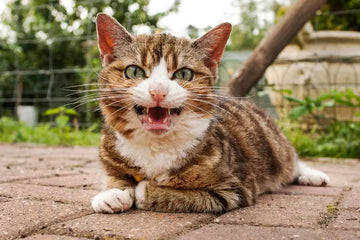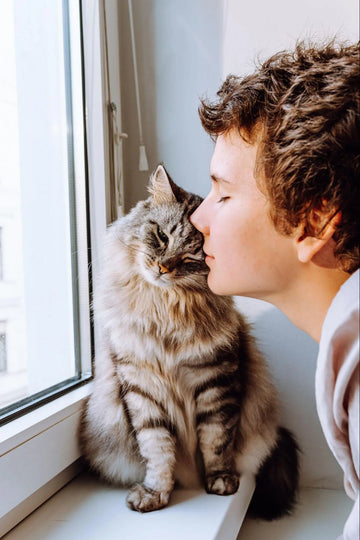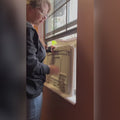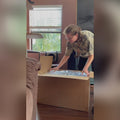A catio, short for cat patio, is an outdoor enclosure designed specifically for cats. It allows indoor cats to enjoy the outdoors without the risks associated with free roaming. Catios come in various sizes and styles, tailored to fit different spaces and cater to the unique needs of each cat. They're a testament to how we can enrich our pets' lives by merging indoor safety with outdoor adventures.
Designing for Safety and Stimulation
The safety of your feline friend is the top priority. A secure catio for cats must be constructed with sturdy materials to prevent escapes and keep potential predators out. Pay special attention to the strength of the screens or netting, and ensure all entry and exit points are cat-proof. Regular checks for any wear or tear are essential to maintain safety over time.
Cats thrive on stimulation, and a great catio should cater to this need. Include various levels for climbing, perches for bird watching, and areas for lounging in the sun. Think about adding toys and interactive elements to encourage play. This variety will keep your cat engaged and satisfied, making the catio a favorite spot.
While designing your catio, consider potential risks and how to mitigate them. Ensure the structure is stable and can withstand weather changes. The materials should be non-toxic and safe for cats to chew or scratch. Plan for any emergencies by incorporating an easily accessible exit for your cat.
Finally, comfort is as important as safety and stimulation. Soft bedding, shaded areas for protection from the sun, and perhaps a cozy nook for napping can make the catio a comforting retreat. Security also comes from familiarity, so consider adding items that your cat is already fond of, like a favorite blanket or toy.
Choosing the Ideal Location
A window catio is a popular choice for those with limited space. It attaches directly to a window, offering a compact solution. The advantage of this type is its easy accessibility for cats and minimal space requirement. However, its size can be limiting for larger cats or multiple-cat households. It provides less room for exploration and may offer limited exposure to natural elements.
For those with more outdoor space, a yard-based catio enclosure can be an excellent choice. These structures provide ample space for cats to play, climb, and explore. They can be custom-designed to fit the yard's layout and can include a variety of stimulating features. The downside might be the need for more significant construction efforts and higher costs.
When choosing a location, consider the amount of sunlight the area receives and the local weather conditions. A spot with both sunny and shaded areas is ideal. Ensure the catio is protected from harsh weather elements, like strong winds or heavy rain, to provide a comfortable environment for your cat year-round.
While prioritizing your cat's needs, it's also essential to consider how the catio will blend with your home's aesthetics. The design should complement your home's style and not be an eyesore. Strategic placement can enhance your property's overall appeal while still providing an exciting and safe space for your cat.
Material Selection and Construction
The materials used in building your catio should be durable and weather-resistant to ensure the structure lasts long and remains safe for your cat. Opt for materials like sturdy wire mesh or heavy-duty netting to secure the enclosure. Use weather-resistant woods or metals for the frame. These materials should withstand various weather conditions and resist wear and tear from your cat's activities. When it comes to constructing a catio, you can either take the DIY route or hire a professional. Each option has its merits:
-
DIY Construction:
- Customization: Tailor the design to your exact specifications and preferences.
- Cost-Effective: Potentially lower costs as you're providing the labor.
- Personal Satisfaction: The joy and pride of building something for your pet.
-
Professional Construction:
- Expertise: Benefit from professional knowledge and experience.
- Time-Saving: Faster completion without the need for your direct involvement.
- Quality Assurance: Professional-grade materials and construction quality.
Regular maintenance is essential to keep your catio in top condition. Check for any damage, ensure the enclosure remains secure, and keep it clean to provide a healthy environment for your cat. Simple designs often ease the maintenance process.
Personalizing your catio can make it more enjoyable for your cat and visually appealing. Consider adding features like cat-safe plants, cozy bedding, or fun toys. Customization allows you to create a space that reflects your cat's personality and integrates well with your home's aesthetic.
Innovative Features and Aesthetics
Integrating a window cat litter box into your catio design is a practical and innovative feature. It provides a convenient solution for waste management and keeps litter-related odors outside your home. This setup allows easy access for cleaning while offering your cat a private and comfortable space to attend to their needs, blending functionality with convenience.
The aesthetic appeal of a catio is important for both the cat and the owner. Decorative elements like hanging plants, attractive furnishings, and color themes can enhance the visual appeal of the catio. These elements not only beautify the space but also make it more inviting and enjoyable for your cat. Creating a visually appealing catio involves more than just decorations. As mentioned previously, consider the overall design and how it complements your home and garden. Use materials and colors that blend with your home’s exterior. A well-designed catio should be both a comfortable retreat for your cat and an attractive addition to your home.
The best catio designs balance functionality with style. Every element, from the type of mesh used to the layout of the shelves and perches, should serve a purpose while adding to the overall aesthetic. Think about how each component contributes to your cat's well-being and the catio's appearance, creating a space that is both useful and beautiful.
Indoor Catios: Mimicking the Outdoors
When designing an indoor catio, creativity is key. Utilize vertical space with wall-mounted shelves and cat trees to simulate an outdoor environment. Incorporate elements like artificial grass and branches to mimic outdoor textures and scents. An indoor catio should be a stimulating space that encourages your cat to climb, explore, and relax.
To effectively bring the outdoor experience inside, focus on sensory stimulation. Include features that engage your cat's senses, like bird feeders outside a window for visual stimulation or a small fountain for the sound of running water. The goal is to recreate the intriguing aspects of the outdoors in a safe, controlled environment.
Space limitations require innovative solutions. Compact designs like a window catio can be integrated into smaller spaces. Use foldable or multi-purpose furniture that can serve as both a cat space and a functional part of your home. The aim is to maximize the use of available space without overcrowding your living area.
Building a catio, whether through a DIY project or with professional help, is an act of love for your cat. It demonstrates a commitment to their well-being and happiness. As you embark on this journey, let your creativity and understanding of your cat's personality guide you. The process can be as rewarding for you as the finished catio will be for your cat. Embrace the challenge, and take joy in the knowledge that you are creating a special space that will significantly enhance your cat's quality of life. Remember, the best catio is one that reflects the unique needs and preferences of your feline friend, making it the perfect outdoor paradise for them to enjoy.















































